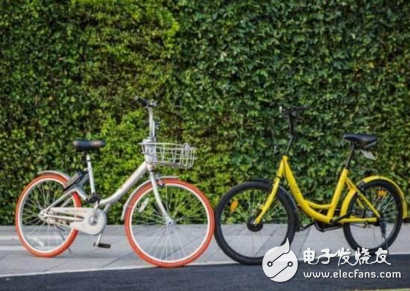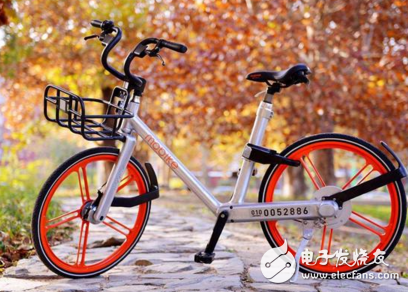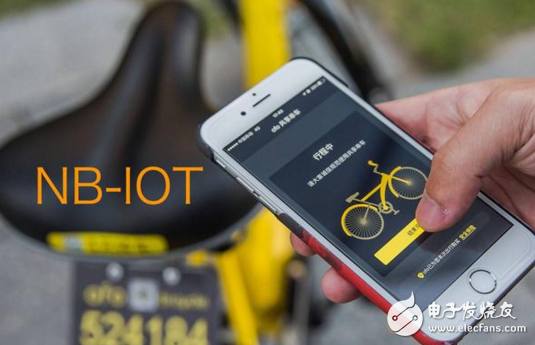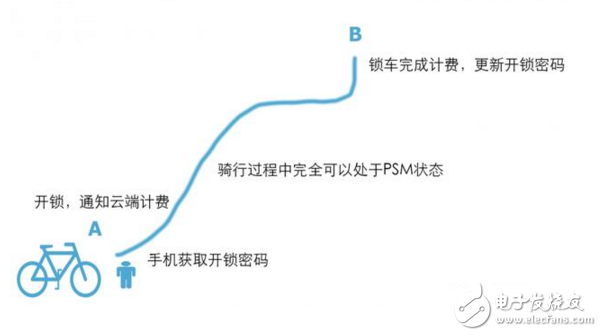In 2017, one of the biggest keywords of technology is not the word "sharing", and the detonation of the sharing economy is now a hot sharing of bicycles. Now sharing bicycles are still hot in the country, and this year there are many industry giants. Bye, today Tencent Ma Huateng (Tencent Investment Mobai) and Jinshajiang Zhu Xiaohu (ofo investor) because Mobai and ofo have a better prospect, the two are in the circle of friends, also shows the capital market's concern for shared bicycles, but The ultimate winner must be to experience better products and products that focus on new technologies, such as how to make it easier for users to find shared bikes? How to better maintain and manage shared bicycles? This requires a shared bicycle to be accurately positioned.
We can see that both ofof and Mobike are actively upgrading their shared bikes, the most important of which is the update in the field of IoT technology. The most popular technology is NB-IOT.

Ofo claims to use NB-IoT technology to improve the riding experience. This year, ofo and China Telecom and Huawei jointly signed the NB-IoT shared bicycle application cooperation agreement, which will provide wireless network solutions including NB-IoT chips. The three parties said that in the near future, "Little Yellow Car" will be able to access China Telecom's wireless network through the latest NB-IoT technology to provide users with a better experience. But the industry has different attitudes.
Some believe that NB-IoT covers a wide range, low power consumption, fast unlocking, standby time can be as long as ten years, can subvert the current shared bicycle program, the other side questioned NB-IoT technology, that NB-IoT shared bicycle It is still too early to abandon the argument of solar power or self-generation, and Mobike will not be too far behind.
For the shared bicycles using NB-IOT technology, many Internet of Things experts have had a heated discussion on this matter. Huawei experts have a positive attitude, and believe that NB-IoT technology must have a market in sharing bicycles, not just bicycles. In fact, you can see the application on the bicycle more widely, is the application of this type of smart lock, the whole car is really useful to the electronic technology is not the lock? You and I can think of it as a lock that needs to be moved. NB-IoT is a new low-power WAN cellular mobile communication technology designed for the Internet of Things. It is ideal for sharing a wide range of bicycles.
Some pessimists believe that the advantage of NB-IoT lies in the introduction of PSM and eDRX low-power technologies, which will inevitably lead to a large delay in downlink communication, so it is not suitable for shared bicycle applications that require real-time interaction.
There are currently two major genres for the bicycle unlocking scheme:
1. Moby bike: use the mobile phone to locate and find a bicycle, then unlock it remotely.

Moby bicycle
2, ofo bicycle: mobile phone scan code, get the unlock password, and then manually unlock

NB-IOT small yellow car
For the first scenario, the NB-IoT is used to replace the currently used GPRS solution. The biggest advantage is not the power saving, but the guarantee of wide coverage and network capacity, which does not affect the unlocking due to the excessive number of bicycles in a single base station. But I personally think that the current NB-IoT chip cost and network do not have much advantage, the use of GPRS is also not bad. The NB-IoT solution has no obvious advantages, and because of the need to remotely unlock, NB-IoT's low-power technology can't be used. If you have to use it, consider that future eMTC solutions may be more suitable.
Then the focus is on the second option, and ono believes that NB-IoT can abandon solar energy and self-generation. Because in the second scheme, the bicycle can adopt the dynamic password, and the NB-IoT PSM feature can be fully utilized. In the power saving state, it is not necessary to communicate with the network, and the activation password on the lock is periodically updated. When the user unlocks, the cloud can be actively reported and the vehicle is successfully enabled. After the user completes the ride, the bicycle will be locked. At this time, the cloud will be reported again, and the billing can be completed quickly (while the dynamic password is refreshed), similar to the OTP dynamic key used by many banks.
In fact, these two programs have their own advantages and disadvantages. The former looks very fashionable, but it is dumbfound when it encounters a network failure. Similar incidents have been encountered in several areas before, and large areas cannot be unlocked. The latter also has its own problem, the unlock password can not be modified, it is easy to be remembered to crack, (ofo generation of mechanical locks are like this)
Let's take a look at the ideal NB-IoT bike solution scenario.

1) The user finds the bicycle at the A location, scans the code on the mobile phone, and obtains the unlock password.
2) After the password is successfully entered, the lock is successfully unlocked, and the NB-IoT can report the open information to the cloud and start billing.
3) NB-IoT can be used throughout the entire ride.
4) After the user arrives at the B location, the car is locked directly, and the NB-IoT can report the shutdown information to the cloud and complete the billing.
5) The bicycle receives a new dynamic password at the same time, and the user receives the deduction information.
It can be seen that NB-IoT has two connections with the Internet during the entire use. If the smart lock technology is so powerful, even the power generated by the kinetic energy of the switch lock can be used to complete the data communication.
Of course, the real ofo application is certainly not that simple. And there must be someone to challenge my plan, how do you solve the problem of finding a car and positioning, plus GPS positioning, power consumption is definitely indispensable. In fact, this point is indeed the soft underbelly of NB-IoT. The accuracy of using base station positioning is not enough, but in theory, you can use the positioning information of the user's mobile phone. When the mobile phone obtains the password and the notification is successful, it is possible to report the vehicle with more accurate location information, and of course there may be a better solution. If you want to join the NB-IOT elite industry group exchange, you can pay attention to the headline number "Things of the Internet of Things" and get it privately.
There is no single technology that can take all the scenes. After understanding the length of the technology, the most suitable solution for the scene may be the solution. Although there is no real-time 4G network on the NB network, in terms of the billing scenario, there is really no need to deal with it in real time. As long as the time is acceptable, the time record at the end of use and at the end can be completed unless The mileage metering mode is used. In order to ensure that the smart lock can operate at the lowest power consumption, and avoid data reporting as much as possible, the maximum value of the NB-IoT solution can be exerted.
The primary purpose of any fuse cutouts is to provide protection to the lines of your system and the various apparatus on those lines such as transformers and capacitor banks. Fuse cutouts provide reliable protection from low-level overloads that just melt the fuse link, intermediate faults, and very high faults, through maximum interrupting capacity.
Fuse Cutout,Fuse Cutout Amperes,Porcelain Fuse,Cut Out Fuse Carrier
Jilin Nengxing Electrical Equipment Co. Ltd. , https://www.nengxingelectric.com